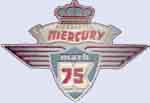In theory, what effect would a one inch decrease in diameter have on thrust, in conjunction with the RPM increase that would be produced, by a propeller moving through the water, if no other factors were changed?
(This is an example to make understanding what I'm asking more understandable. These numbers are for simplicity and clarity only). For instance, if I had a 10 inch prop producing 100% thrust at a given RPM and NO other factors changed (horsepower, pitch, blade shape, style, or number, drag, viscosity, velocity, etc.), and I reduced the diameter 1 inch, the thrust would be 90% at the same RPM, then 80% for 2 inches, 70% for 3 inches....
Now, the question again in its final form. Using the above example: What would the thrust be with the increase in RPM? Would the thrust be less than 10% decrease or more than 10%, for each 1 inch diameter decrease?
I'm not interested in the effects hull design have on the equation. I'm just talking about a prop moving through the water. Blade shape, design, and number, exact figures or Reynolds numbers are irrelevant in this question. I'm aware that these factors all have an effect in reality, but I am not interested in these effects for this theoretical question.
Ken


 Thanks:
Thanks:  Likes:
Likes: 


 Reply With Quote
Reply With Quote




 is by needing to trim back the leading edge some to re-shape, has the pitch increaased? Otherwise Id think Sam has it right that its an art. I got lucky, no way to be sure but to do it at your props risk.
is by needing to trim back the leading edge some to re-shape, has the pitch increaased? Otherwise Id think Sam has it right that its an art. I got lucky, no way to be sure but to do it at your props risk.




Bookmarks